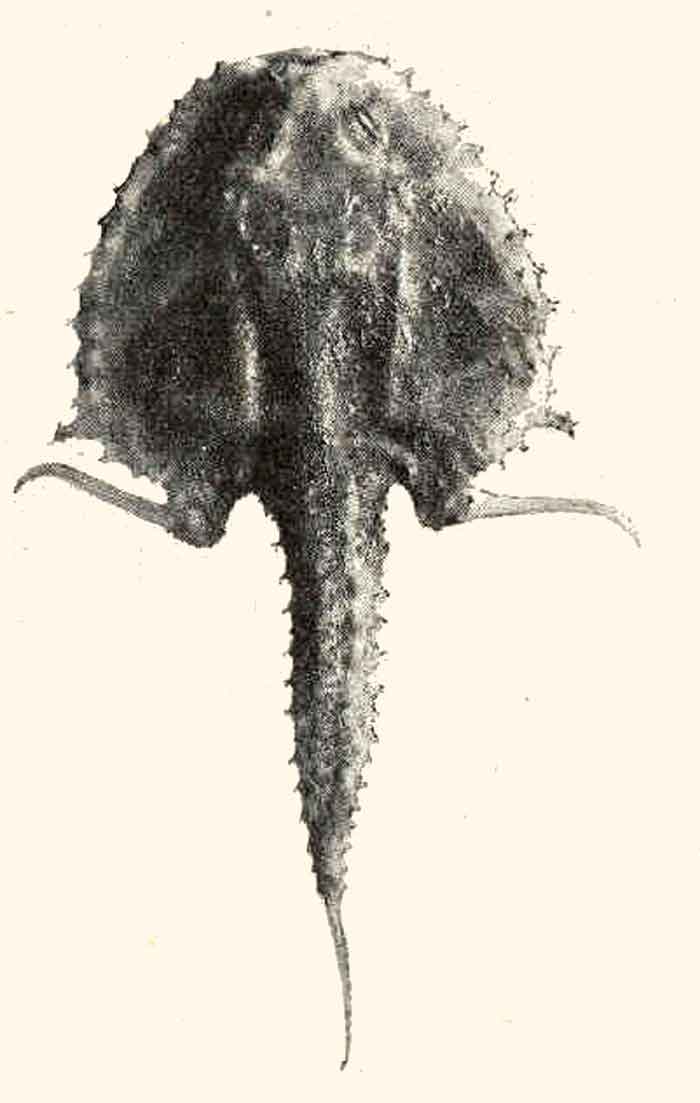Superregnum: Eukaryota
Cladus: Unikonta
Cladus: Opisthokonta
Cladus: Holozoa
Regnum: Animalia
Subregnum: Eumetazoa
Cladus: Bilateria
Cladus: Nephrozoa
Superphylum: Deuterostomia
Phylum: Chordata
Subphylum: Vertebrata
Infraphylum: Gnathostomata
Megaclassis: Osteichthyes
Superclassis/Classis: Actinopterygii
Classis/Subclassis: Actinopteri
Subclassis/Infraclassis: Neopterygii
Infraclassis: Teleostei
Megacohors: Osteoglossocephalai
Supercohors: Clupeocephala
Cohors: Euteleosteomorpha
Subcohors: Neoteleostei
Infracohors: Eurypterygia
Sectio: Ctenosquamata
Subsectio: Acanthomorphata
Divisio/Superordo: Acanthopterygii
Subdivisio: Percomorphaceae
Series: Eupercaria
Ordo: Lophiiformes
Subordo: Ogcocephalioidei
Superfamilia: Ogcocephalioidea
Familia: Ogcocephalidae
Genus: Halicmetus
Species:
H. drypus – Ho & Last, 2018;
H. granulosus – Ho, 2022;
H. marmoratus – Weber, 1913;
H. niger – Ho, Endo & Sakamaki, 2008;
H. reticulatus – Smith & Radcliffe, 1912;
H. ruber – Alcock, 1891;
H. westraliensis – Ho & Last, 2018
Name
Halicmetus Alcock in Wood-Mason & Alcock, 1891
Gender: masculine
Type species: Halicmetus ruber Alcock, 1891, by monotypy.
References
Bradbury, Margaret G. (2003) Family Ogcocephalidae Jordan 1895: batfishes. Annotated Checklists of Fishes, no. 17. 1-17. PDF
Ho, H-C. & Last, P.R. 2018. Review of the batfish genus Halicmetus Alcock, 1891 from Australian waters, with descriptions of two new species (Lophiiformes: Ogcocephalidae). Zootaxa 4508(2): 179–196. DOI: 10.11646/zootaxa.4508.2.2 Open access pdf Reference page.
Wood-Mason, J. & Alcock, A. 1891a. Natural history notes from H.M. Indian marine survey steamer ‘Investigator,’ Commander R. F. Hoskyn, R.N., commanding.—Series II., No. 1. On the results of deep-sea dredging during the season 1890–91. Annals and magazine of natural history. (6)8(43): 16–34, pls. 7–8. BHL. Reference page.
Links
Halicmetus – Taxon details on Integrated Taxonomic Information System (ITIS).

Halicmetus ruber
Halicmetus is a genus of marine ray-finned fishes belonging to the family Ogcocephalidae, the deep sea batfishes. The fishes in this genus are widely distributed in the Indian and Western Pacific Oceans.
Taxonomy
Halicmetus was first proposed as a monospecific genus in 1891 by the British physician and zoologist Alfred William Alcock when he described Halicmetus ruber.[1] The type locality of H. ruber was given as the Andaman Sea at 11°31'40"N, 92°46'06"E at a depth of 188–220 fathoms (1,128–1,320 ft; 344–402 m), the Investigator station 115.[2] This genus is classified within the "Indo-Pacific clade" of the family Ogcocephalidae.[3] The family Ogcocephalidae is classified in the monotypic suborder Ogcocephaloidei within the order Lophiiformes, the anglerfishes in the 5th edition of Fishes of the World.[4]
Species
Halicmetus contains eight recognised species:[5][2][6]
Halicmetus drypus Ho & Last, 2018 (Pink shortnose seabat)
Halicmetus granulosus Ho, 2022
Halicmetus niger Ho, Endo & Sakamaki, 2008 (Black shortnose seabat)
Halicmetus marmoratus Weber, 1913 (Marbled shortnose seabat)
Halicmetus odysseus Prokofiev, 2020
Halicmetus reticulatus H. M. Smith & Radcliffe, 1912 (Marbled seabat or reticulated shortnose seabat)
Halicmetus ruber Alcock, 1891 (Red shortnose seabat)
Halicmetus westraliensis Ho & Last, 2018 (West Australian shortnose seabat)
Characteristics
Halicmetus seabats are characterised by their very flattened heads with the front edge of the head being either broadly rounded or squared off. The snout extends out over the small mouth and the front edge of the disc of the head. The dorsal fin is either tiny or is not present. The whole body is covered in scales developed into small bucklers and small tubercles. The subopercular buckler is moderately well developed and has some small terminal spinules. The second and third gill arches have gill filaments; the fourth does not. Gill rakers are found on the first to third gill arches. The esca, or lure, is bulbous and triangular with a fringe on its lower edge and typically has a pair of cirri on its upper surface The teeth on the vomer and palate are arranged in three neighbouring quadrangular patches and those on the tongue in two joined and elongated patches.[6] These fishes are no longer than 9 cm (3.5 in) in length.[5]
Distribution and habitat
Halicmetus seabats are found in the Indian and Western Pacific Oceans, as far west as northern Madagascar, north to Japan, south to Australia and east as far as New Caledonia.[2] These are bathydemersal fishes found at depths between 280 and 1,000 m (920 and 3,280 ft).[7]
References
Eschmeyer, William N.; Fricke, Ron & van der Laan, Richard (eds.). "Genera in the family Pgcocephalidae". Catalog of Fishes. California Academy of Sciences. Retrieved 13 May 2024.
Eschmeyer, William N.; Fricke, Ron & van der Laan, Richard (eds.). "Species in the genus Halicmetus". Catalog of Fishes. California Academy of Sciences. Retrieved 13 May 2024.
Valerie Derouen; William B. Ludt; Hsuan-Ching Ho; Prosanta Chakrabarty (2015). "Examining evolutionary relationships and shifts in depth preferences in batfishes (Lophiiformes: Ogcocephalidae)". Molecular Phylogenetics and Evolution. 84: 27–33. doi:10.1016/j.ympev.2014.12.011.
Nelson, J.S.; Grande, T.C.; Wilson, M.V.H. (2016). Fishes of the World (5th ed.). Hoboken, NJ: John Wiley & Sons. pp. 508–518. doi:10.1002/9781119174844. ISBN 978-1-118-34233-6. LCCN 2015037522. OCLC 951899884. OL 25909650M.
Froese, Rainer; Pauly, Daniel (eds.). "Species in genus Halicmetus". FishBase. February 2024 version.
Bray, D.J. (2019). "Halicmetus". Fishes of Australia. Museums Victoria. Retrieved 13 May 2024.
Froese, Rainer; Pauly, Daniel (eds.). "Halicmetus ruber". FishBase. February 2024 version.
Retrieved from "http://en.wikipedia.org/"
All text is available under the terms of the GNU Free Documentation License

